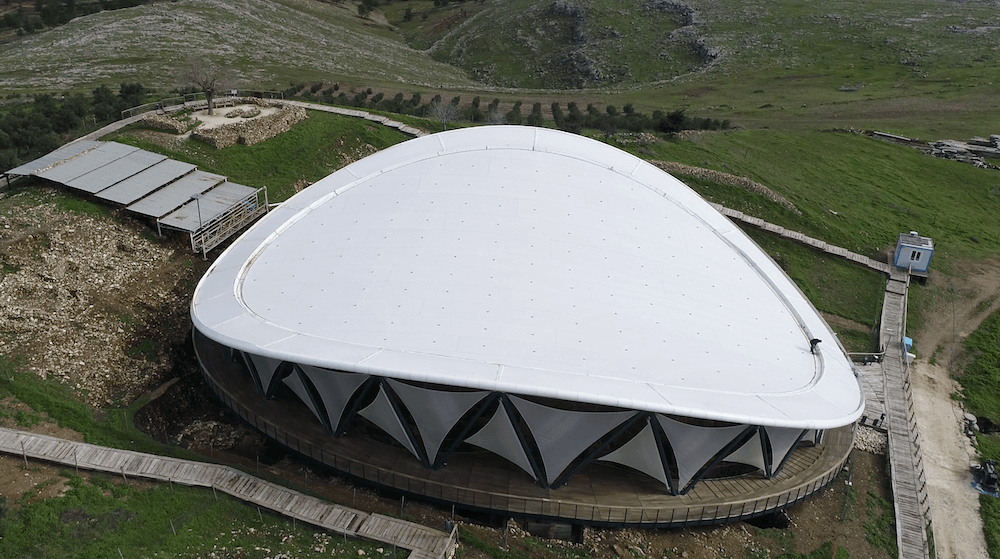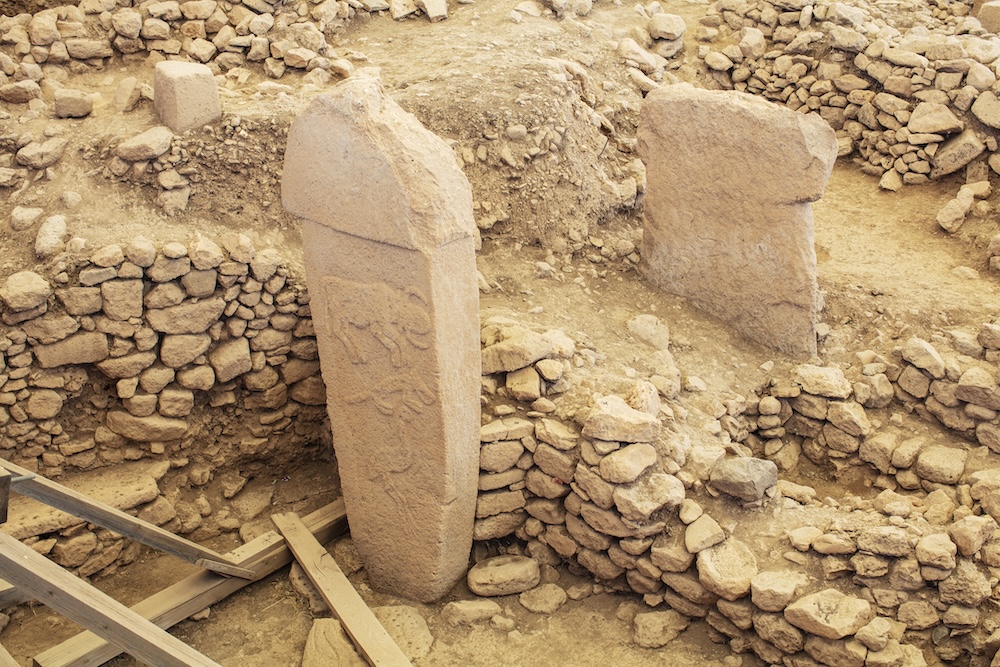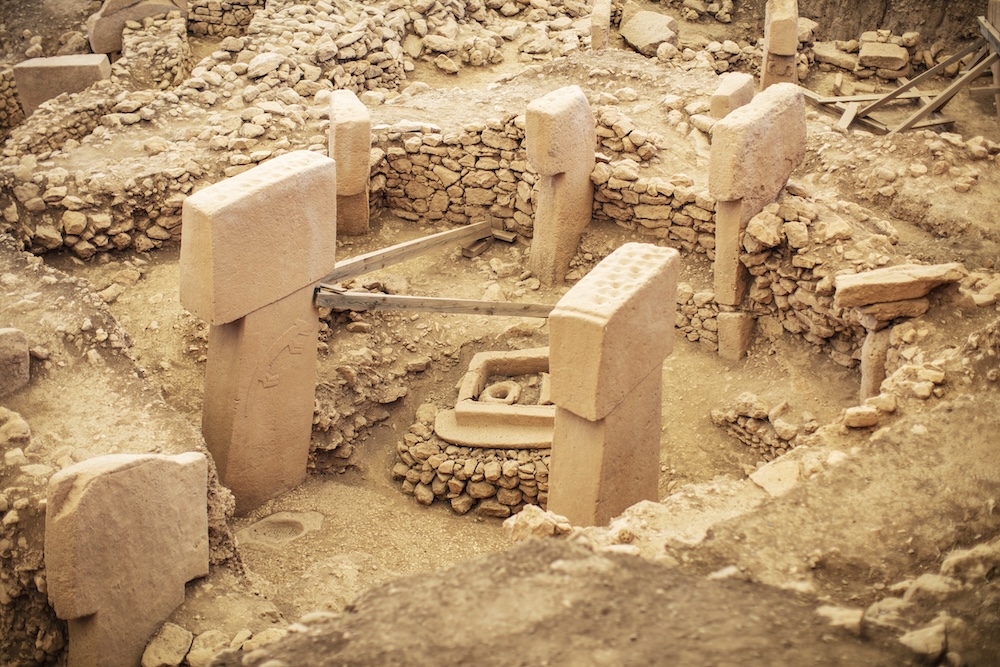The ancient site of Göbekli Tepe in southeastern Turkey has changed the way we think about early human civilization for more than twenty years. In the Germuş mountains of southeastern Anatolia, this amazing site has huge round-oval and rectangular megalithic structures built by hunter-gatherers between 9,600 and 8,200 BCE, during the Pre-Pottery Neolithic age. Göbekli Tepe, which is sometimes called "the world's first temple," is about 6,000 years older than Stonehenge and is one of the first examples of monumental architecture by humans.

The Find That Changed Everything
In 1963, the University of Chicago and Istanbul University did an archaeological survey and found the site, but they thought it was just a medieval cemetery. German archaeologist Klaus Schmidt, who had been working at Nevalı Çori before, didn't decide to look at the site again until October 1994. Mahmut Yıldız, whose family owned the land, told him to go to Göbekli Tepe after he asked people in nearby villages about hills with flint.
From 1996 until his death in 2014, Klaus Schmidt was in charge of the excavations at Göbekli Tepe. In the spring and fall, his team usually dug up the site for two months. Schmidt said in an interview in 2011 that about five percent of the site had been dug up. Lee Clare has been in charge of the German Archaeological Institute's research since Schmidt died. Istanbul University, the Şanlıurfa Museum, and the DAI all work together under the direction of Necmi Karul.
The Stone Age's Architectural Wonder
The site is famous for its big round buildings with big stone pillars inside. These are some of the oldest known megaliths in the world. A lot of these pillars have anthropomorphic details, clothing, and sculptural reliefs of wild animals on them. Some of the T-shaped pillars are as tall as 5.50 meters and are made of limestone. They have detailed animal reliefs of snakes, vultures, foxes, scorpions, and spiders.

The biggest pillars on the site weigh about 50 tons, and it would have taken hundreds of workers and years of work to carve and move them. They were made of limestone and arranged in circles to create communal places for rituals. The most studied and oldest part of the site, Enclosure D, has a detailed layout with dozens of carvings, two central pillars, and benches along the walls.
Recent discoveries have made the site's complexity even more clear to us. Excavations at Göbekli Tepe have uncovered an amazing painted boar statue that is thought to be one of the oldest painted statues from the Mesolithic period. It is covered in red, white, and black pigments. Researchers found a 2.3-meter-tall statue at nearby Karahan Tepe that is said to be one of the best examples of prehistoric art.
Dating that Changed the World and Its Astronomical Importance
Recent studies have shown strong proof that the people who built Göbekli Tepe had a lot of knowledge about astronomy. A new look at V-shaped symbols carved into pillars has uncovered what could be the oldest solar calendar in the world. Researchers could count a solar calendar of 365 days on one of the pillars, which had 12 lunar months and 11 extra days. Each V could stand for one day.
These carvings may have been made by people a long time ago to remember the day a group of comet fragments hit Earth almost 13,000 years ago, or 10,850 BC. The comet hit is thought to have started a mini ice age that lasted more than 1,200 years and killed off many kinds of large animals. This view suggests that people in the past were able to write down dates using precession, which is the wobble in Earth's axis that changes how constellations move across the sky. This happened at least 10,000 years before Hipparchus of Ancient Greece wrote about it around 150 BC.
Hunter-Gatherers or Early Farmers?
People have been arguing about who built Göbekli Tepe for a long time. Evidence shows that the people who lived in Göbekli Tepe were hunter-gatherers who grew and raised some of their own food. Recent discoveries, on the other hand, point to a settlement at Göbekli Tepe with homes, a water supply, tools for daily life, and extensive cereal processing. This is different from the previous view that the site was a sanctuary for nomads.
There are more than 7,000 grinding stones that have been found at the site, which are thought to have been used to process cereal. In the first year of full excavation, more than 3,000 stone tools were found. Most of them were made of flint, but a few were made of obsidian. They included cores, flakes, choppers, blades, burins, scrapers, and projectile points.
The Debate About the Neolithic Revolution
Göbekli Tepe is now a key part of discussions about the Neolithic Revolution, which was the change from hunting and gathering to farming. Schmidt proposed the intriguing idea that instead of constructing temples after acquiring agricultural skills, hunter-gatherers initially erected megalithic sites such as Göbekli Tepe, thereby establishing the groundwork for the subsequent emergence of complex societies.
Radiocarbon dating shows that farming started in the area about 10,500 years ago, which is only a few hundred years after Göbekli Tepe was built. Other places in the area show signs that sheep, cattle, and pigs were domesticated 1,000 years after the monuments at Göbekli Tepe were built.
But current archaeological research paints a more complicated picture. Lee Clare says that Göbekli Tepe's communal structures were built as the last stand of the region's hunter-gatherers, not as the inspiration for farming and settlement. Instead of accepting the changes they saw in the flatlands, the people who built Göbekli Tepe fought back.
How people get along and what they do for fun
The size of the building at Göbekli Tepe suggests that the people there had a complex social structure. The huge stone pillars, which weighed many tons, were very important proof of cooperation. The fact that hundreds of people would have had to work together to build them shows that hunter-gatherers worked together, probably because they shared beliefs and social norms.
Schmidt says that ragged groups of hunter-gatherers could not have built the monuments. It would have taken hundreds of workers to carve, put up, and bury rings of seven-ton stone pillars, and they would have all needed food and shelter. Some estimates say that 12 to 24 people could have built all of the exposed PPNB structures in less than four months, which would have given them time to quarry stone and gather and prepare food. These numbers are thought to be within the ability of a single extended family or village community.
Schmidt and his team found more than 100,000 pieces of animal bones. Many of them had cut marks and broken edges, which showed that animals were being killed and cooked. There were bones from a lot of different kinds of birds, as well as from wild animals like gazelle (over 60% of the bones), boar, sheep, and red deer.
The Secret of Intentional Burial
Every few decades, the existing pillars were buried and replaced with new stones that made up a smaller, concentric ring inside the older one. This is one of the most interesting things about the structure. About 1,000 years after the enclosures were built, they were filled with rocks and other junk. People think that the act of deliberately backfilling helped keep the site safe for thousands of years.
After an unknown amount of time, the sanctuaries of the older layer at Göbekli Tepe were buried on purpose and quickly. This seems to have been a normal part of their use from the start. The reasons for this practice are still not clear, but some researchers think it may have been part of ritual renewal cycles.
Spiritual Importance and Iconography
The art at Göbekli Tepe gives us a glimpse into the spiritual world of the people who built it. The pictures on the pillars show a hunter-gatherer way of life because they show wild animals instead of bulls and cows and other fertility-related pictures that are common in farming communities. Ian Hodder says that the carvings on the pillars at Göbekli Tepe show not edible animals like deer and cattle, but scary animals like lions, spiders, snakes, and scorpions. He calls it "a scary, fantastic world of nasty-looking beasts."

Schmidt posited that the T-shaped pillars symbolize human figures, potentially ancestors, suggesting that a fully developed belief in deities emerged later in Mesopotamian history. This aligns with ancient Sumerian beliefs that agriculture, animal husbandry, and weaving were imparted to humanity from the sacred mountain Ekur.
New findings and research that is still going on
As of 2021, around 10% of the site has been dug up. Using ground-penetrating radar and geomagnetic surveys, Schmidt made a map of the whole summit, showing where at least 16 other megalith rings are buried on 22 acres. The excavation takes up less than 5% of the site.
The General Directorate of Cultural Assets and Museums of the Republic of Turkey Ministry of Culture and Tourism has been in charge of the Stone Hills Project since 2017. It involves a lot of archaeological work in seven areas, including Göbekli Tepe and Karahan Tepe.
Recent excavations have also found the remains of non-monumental structures that look like they came from homes. This has changed the way people think about the site, which was once thought to be only a ceremonial center.
Effects on Culture and History
In 2018, Göbekli Tepe was named a UNESCO World Heritage Site because it is "one of the first manifestations of human-made monumental architecture." According to UNESCO, the monuments were probably used for social events and rituals. They give us a glimpse into the beliefs and way of life of people who lived in Upper Mesopotamia around 11,500 years ago.
The site goes against basic ideas about how early human societies worked. Historians and archaeologists didn't think that people who lived when Göbekli Tepe was built could have made such complicated buildings. It would have been surprising to see such early farmers building complicated temples, let alone hunter-gatherers.
Scientific Agreement and Current Debates
Present academic analysis underscores prudence concerning significant assertions regarding Göbekli Tepe's influence on human evolution. Lee Clare says, "I don't agree with the idea that Göbekli Tepe is the smoking gun of the Neolithic." He asserts that Göbekli Tepe does not symbolize the impetus for agriculture and settlement in the region; instead, it signifies the final resistance of the area's hunter-gatherers.
Rémi Hadad says that "the interpretative enthusiasm that sought to see Göbekli Tepe as a regional ceremonial centre where nomadic populations would periodically converge is giving way to a vision that is more in line with what is known about other large Pre-Pottery Neolithic sites, where ritual and profane functions coexist."
Conclusion: A Glimpse into the Past of Humanity
Göbekli Tepe is proof of how complicated and advanced early human societies were. Whether regarded as the inaugural temple, an astronomical observatory, or a communal hub for nascent agricultural societies, it fundamentally contests linear narratives of human advancement from primitive hunter-gatherers to sophisticated civilizations.
The site changes how we think about hunter-gatherer culture and makes us rethink the traditional view of how civilization began. The ability of hunter-gatherer societies to coordinate the construction of such an intricate site as early as the 10th or 11th millennium BC compels a reevaluation of our assumptions regarding prehistoric capabilities.
Göbekli Tepe continues to change how we think about the beginning of civilization as excavations go on and new discoveries are made. It reminds us that human creativity, spirituality, and social organization have deeper roots than we thought. The site connects the Paleolithic and Neolithic worlds and represents the moment when people first began to change the landscape based on shared ideas and beliefs.
